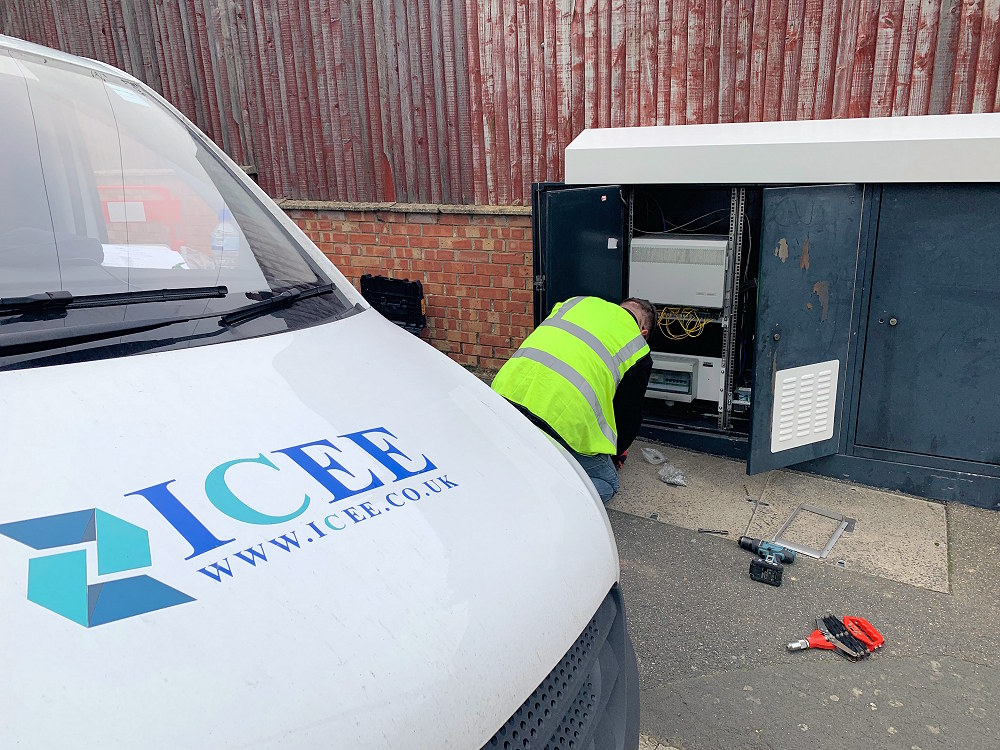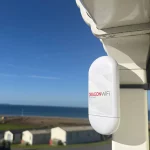How WightFibre Cut Full Fibre Costs by Reusing Old Cable Cabinets
A new case study has offered an interesting insight into how ISP WightFibre has been able to reduce the costs of their £35m “Gigabit Island” project, which aims to roll-out a 1Gbps FTTP broadband network to cover 53,000 of the 61,000 homes on the Isle of Wight (South of Hampshire, England) by the end of 2021.
At an approximate pre premises cost of £660 the WightFibre deployment would need to be very efficient, particularly given that a lot of the island is quite rural and their existing cable (Hybrid Fibre Coax / DOCSIS) network only has limited coverage.
In keeping with that the roll-out has been split into two parts. The first part will deploy Fibre-to-the-Premises (FTTP) into areas of the island that have never been covered before by the cable TV network (expected to require around 35 new cabinets) and the second part would need to figure out how to convert the existing cable infrastructure to add FTTP (27 live existing cabinets plus a few unused or in repair).
Advertisement
On top of that the operator has previously indicated that building the new network could require some 500,000 metres (500km) of trench to be dug, which would then be laid with 5 million metres of duct and 750 million metres of optical fibre.
The “Conservative” Rollout Plan
– Cowes and East Cowes – January 2019
– Newport – June 2019
– Ryde – March 2020.
– Sandown, Shanklin and Ventnor – June 2019 to December 2020NOTE: Some pilot deployments have already taken place (e.g. Staplers in Newport and Gurnard Pines).
The first part of the roll-out, while extremely expensive, is at least fairly straightforward to understand because it largely involves building a new network from scratch and most of the effort thus comes from the street works side. However the second part, which would require a significant change to their existing cabinets, is more complicated but the potential cost savings could be huge.
Apparently a new fully equipped cabinet can cost upwards of £25,000 on WightFibre’s network and once you add in the other aspects (civil engineering, planning etc.) then this can potentially push the cost up to £100,000 in some areas. Such a roll-out would also take longer due to the usual admin delays involved with getting consent for new infrastructure.
Due to this the idea of installing a new cabinet next to the old one (similar to what Openreach did with FTTC / VDSL2) was rejected as being too slow and expensive (plus many exist on narrow pavements where space is at a premium). By comparison if they were to upgrade the existing cabinets then it would be a far cheaper process that could take hours rather than days or weeks, but doing so wouldn’t be easy.
Advertisement

Out of the 27 existing cabinets many are typically big, up to 18 years old and located mostly on dense urban streets. A lot of those cabinets are also full of existing equipment and it would be a difficult job to re-do everything. Luckily WightFibre’s telecom contractor, ICEE Managed Services, found a way.
ICEE Case Study Statement
The changes called for replacement or re-organising of existing equipment and insertion of new devices, the latter being bulky assemblies including power supplies, rectifiers, batteries and distribution panels. This was complicated by two other issues – accommodating the bundled mass of up to 1,700 fibre optic cables within cabinets, plus the fitting of fans to cool the new, hotter-running power supply units.
Fibre optic cable also brings its own special demands. For a start, bending each one to allow for routing in and out of a cabinet, or connecting up to internal equipment, is not the same as for co-axial copper cables. Copper can be bent through a tight right-angle. Fibre optic requires bigger radii and hence different routing requirements.
Then there was the question of how to fit large fans, including the cutting of two ventilation apertures – one to bring outside air into the cabinets and another to expel hot air and prevent excessive heat build-up affecting equipment inside.
Initial design, development and test revealed a further complication – the fans plus new air flows generated noise. In an urban setting with houses close by, decibels had to be suppressed. This was done by ICEE raising the original height of the cabinet roof to accommodate the fitting of sound-absorbing fibre panels beneath. Working on cabinets it had not originally made, the contractor designed and manufactured replacement metalwork. Like the fabric of an old house changed many times over decades to suit new requirements, the cabinets are being affordably upgraded to modern standards.
The approach that ICE takes here is to carefully prepare bespoke conversion kits for each cabinet ahead of time (not all cabinets are identical), which is necessary in order to avoid a protracted downtime of local services during the work. Likewise a separate piece of work takes place in order to ensure that the optical fibre cables are blown through duct and ready to be connected on the day.
As a result the team arrives on site at around 4am, unlocks the cabinet, shuts down power (downtime target is just 2 hours), removes equipment, cuts ventilation apertures and fits louvred panels, replaces the roof structure (complete with sound insulation), fixes new brackets, installs new equipment, connects up the cables (sometimes hundreds of them), restores power and runs final tests. All done by “no later” than 6am!
Advertisement
Lest we forget that all of this also involves converting existing cabinets in order to install FTTP in parallel with the HFC cable network that’s already in them. ICEE now has a big job ahead and they also hold the future maintenance contract for both the old and new side of the network, but so far they seem to be doing some impressive work and we hope that’s maintained.
Mark is a professional technology writer, IT consultant and computer engineer from Dorset (England), he also founded ISPreview in 1999 and enjoys analysing the latest telecoms and broadband developments. Find me on X (Twitter), Mastodon, Facebook, BlueSky, Threads.net and Linkedin.
« Vodafone UK Top 525,000 Broadband Users and See Mobile Growth

















































Comments are closed